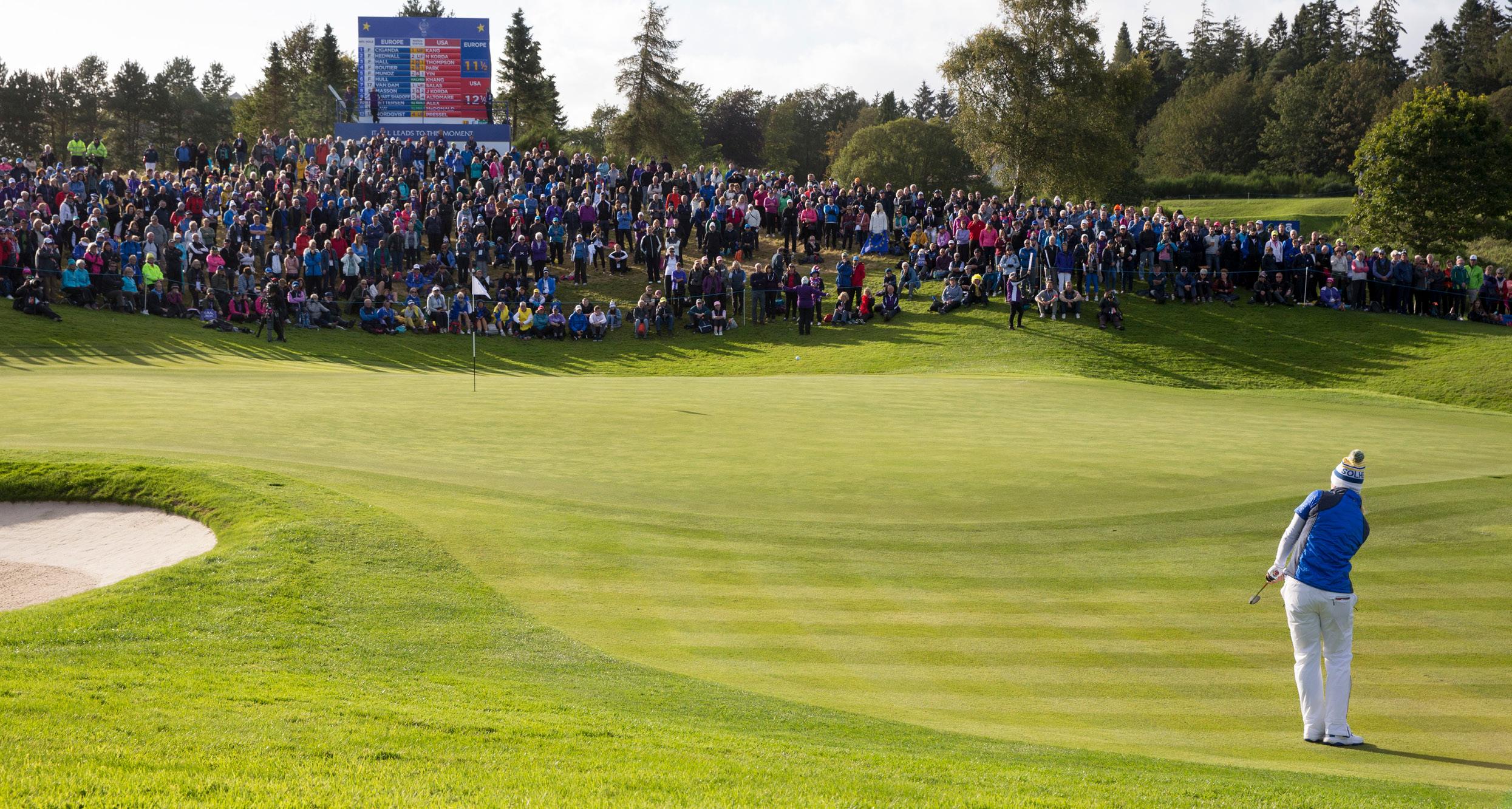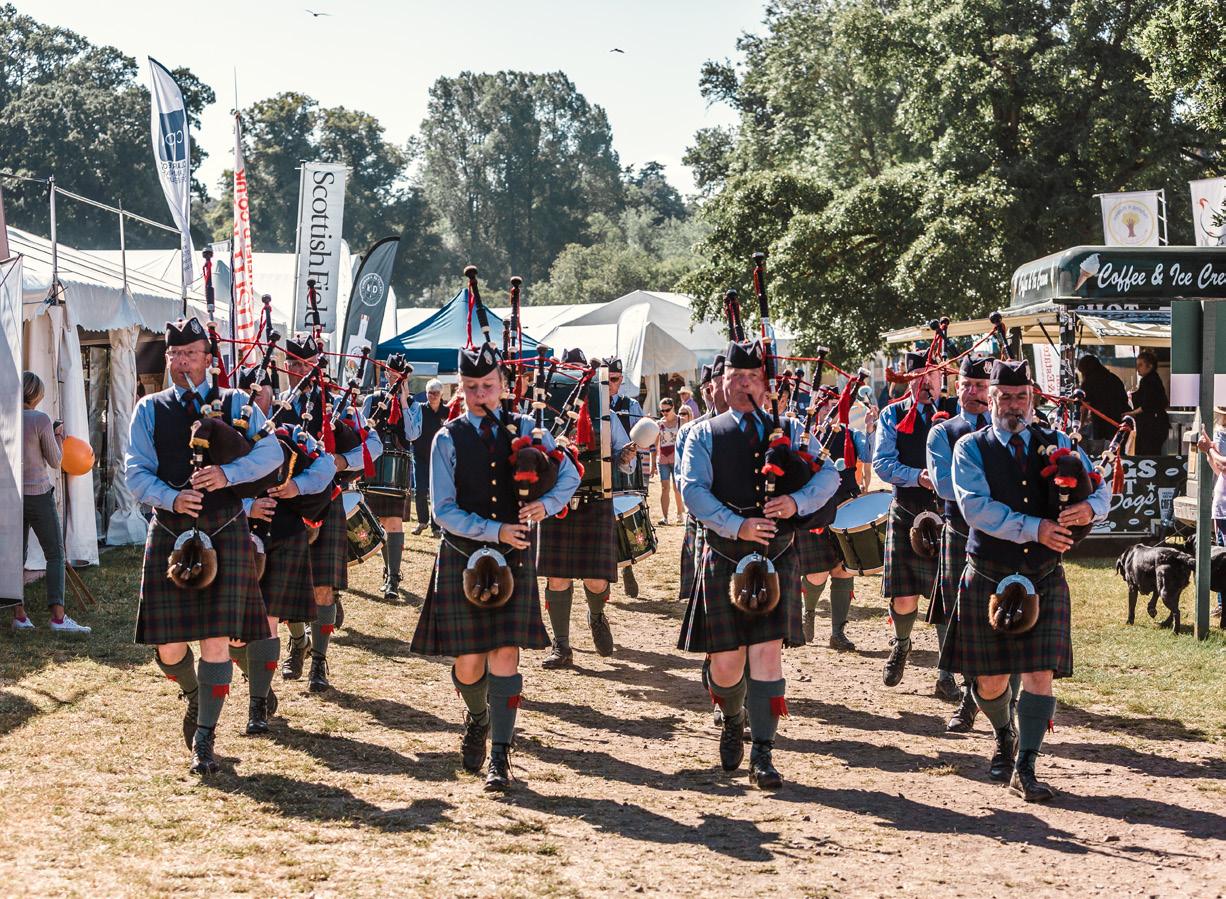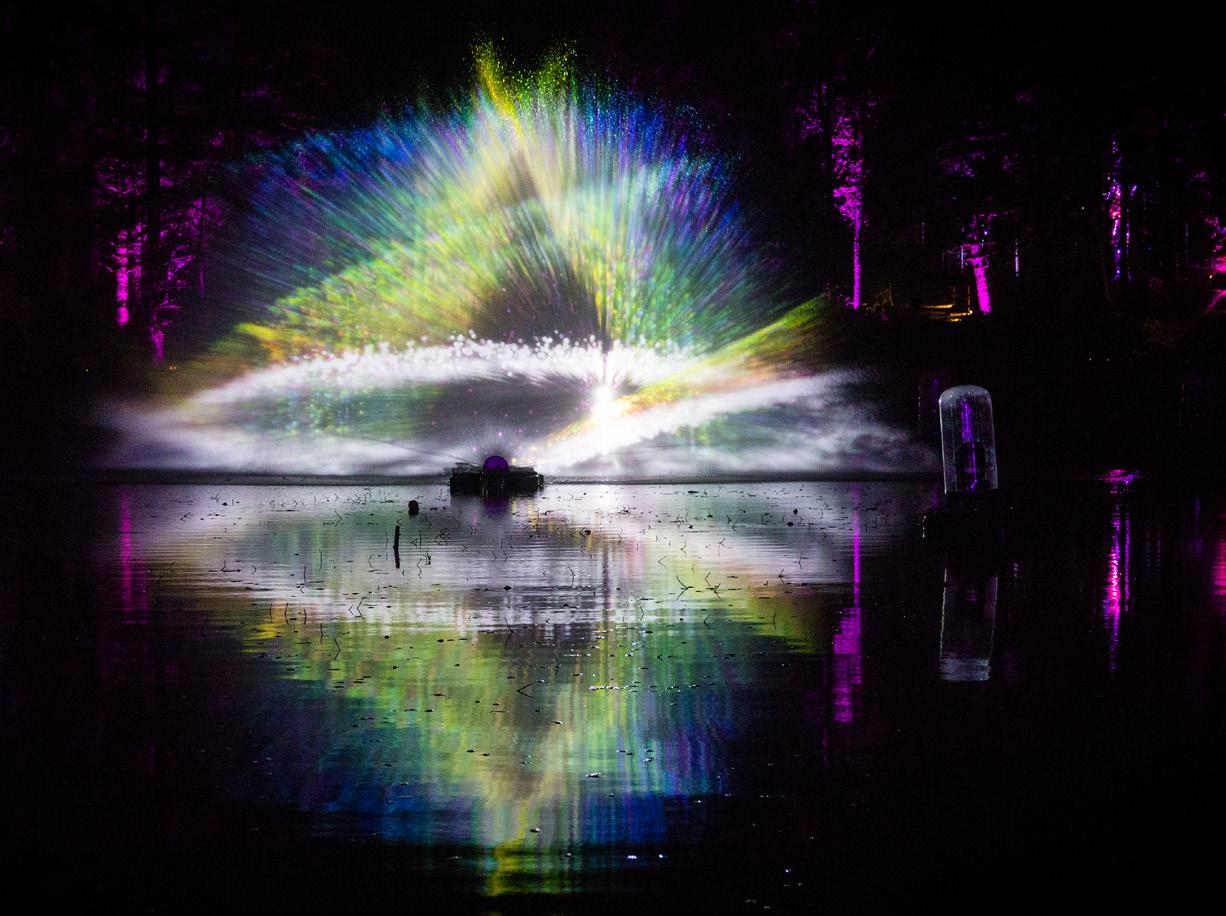
5 minute read
Event Tourism’s £618m Economic Boost
teeped in history, alive with culture and boasting some of Scotland’s most scenic landscapes, Perthshire has long since been at the forefront of Scottish tourism. As one of the area’s most prominent industries, tourism accounts for 12% of total employment in the area to cover around 8,000 jobs ranging from hotel receptionists to white-water adventure guides, and historical tour operators to award-winning chefs. It is estimated that in 2018 the area received approximately 2.35 million visits which generated an economic impact of over £618 million – a significant 26% increase on the £489 million recorded at the start of the decade, in 2010. Why then, when the UK has faced some of the most challenging economic times in recent history, has Perthshire’s tourism sector remained not just steady but positively buoyant? In 2013 the Council adopted an Events & Festivals strategy that cited ambitious plans to propel the city and its wider area forward into 2020. Set against a backdrop of restored city status, the 2014 Ryder Cup at Gleneagles and the emergence of the national themed years for Scotland, the aspiration was to grow the economic contribution large-scale events made to the area. VisitScotland Regional Leadership Director, Caroline Warburton commented, “For Scotland, events are acknowledged drivers of visits to a destination and have the added value of creating vibrancy and driving economic benefits for communities, as well as portraying a positive image for the purposes of attracting investment and talent. “Perth and the wider area boasts a great number of longstanding, high quality events including the Enchanted Forest, Perth Festival of the Arts and Perth Racecourse’s summer jump season. “In addition to these, large annual fixtures such as Etape Caledonia and Rewind Festival had just laid down roots in the area, but in the years since they have kept the same groups of loyal fans returning for more of the same. The Council’s strategy at the time aimed to harness these success stories and build on them to ensure longer term sustainability.” The central theme of the strategy was to be “acquisition and growth” – building the tourism portfolio by securing new, largescale events, as well as working internally to develop their own opportunities and ideas. Playing to the strength of the landscape in Perth, the diversity of the area lends itself particularly well to event tourism with well-maintained, sprawling estates, and land owners willing and able to seize the opportunities. Scone Palace, one of Scotland’s leading 5-star visitor attractions, is an excellent example of how traditional estates can be shaped to support the infrastructure required to become a large-scale event venue. Festivals such as Rewind and BBC Music, Radio 2 and Radio 3’s The Biggest Weekend have national interest, with visitors travelling from across the country, and many opting to stay and spend in the area. With scale often comes profile, and oneoff boons such as Gleneagles playing host to the Ryder Cup and Solheim Cup, mean that Perthshire, and therefore Scotland more widely, enjoys a worldwide audience S A new four-year strategy seeks to further grow the pipeline for landmark events Perth and the wider region boasts a great number of long-standing quality events. Building On Tourism’s £618m Economic Boost
This use of events to drive an area’s tourism isn’t just reserved to country estates and largescale festivals. Panorama’s 2019 documentary, “How To Save The High Street” posed interesting questions around the idea of ‘experiences’ as a way to offset the downward trend in traditional retail-driven footfall.
Fittingly, it aired just a week before Perth city’s Christmas Lights event, now heralded by many as the country’s leading event of this nature. As the showcase event in their annual Winter Festival, organisers attract a star-studded line-up for the occasion, and have seen a steady increase in footfall over the past five years reaching an estimated 90,000 visits to the City in November 2019.
In 2017, they made the bold move to extend the Winter Festival beyond Christmas and into January, with their Riverside Light Nights extravaganza. This nine-day event overlooks the River Tay on the edge of the city, and now offers a combination of free and paid theme nights, focused on family groups within an hour’s drive time. Attracting some 30,000 visits to the city at a time of year usually reserved for staying indoors, the ambitious move has certainly paid off.
Alongside growth, there has also been a renewed focus on sustainability and the effective management and delivery of both boutique festivals and large-scale operations. The team in Perth now has a body of
The 2019 Solheim Cup was the 16th edition of the Solheim Cup matches, held from 13th to 15th September at the Gleneagles PGA Centenary Course in Perthshire.
90,000 attendances Direct Economic Impact - £10.89m Total Economic Impact - £11.29m Gross Value Added (GVA) - £4.76m FTEs - 150
Visitor Feedback
84% from the rest of the UK (outside Scotland) expected to return to P&K in the next two years; the corresponding figure for those residing outside the UK was 60%.
Around one third of event specific spectators from outside P&K stayed overnight in paid accommodation in the local area (34.5%). Their average duration of stay was around 4.8 nights at an average cost per person per night of £53 on accommodation.
The average trip duration across all eligible spectators was 2.7 days/nights and their average daily expenditure in P&K on items other than accommodation (for example: food and drink, shopping, local travel) was around £48 per person.

expertise and knowledge that it is only too willing to share with the multitude of organisers and agencies now knocking on their door.

Over the years, Perth and Kinross Council has built solid relationships with the services, agencies and other partners needed to deliver all elements of large scale events, including camping, road closures and on site traders. Within the Council, teams are experienced in the multiple regulatory and licensing responsibilities required to ensure the successful delivery of events, large and small, sporting and music related.
Perth and Kinross Council’s Place Development team is now looking to 2024, with a new four-year strategy seeking to build a pipeline of landmark events across the region. With a more cohesive Perth City Plan in place, the events strategy has become even more closely linked with the wider ambitions of the region.
Caroline Warburton agrees, “I have been greatly encouraged by the event tourism success stories in Perthshire of recent years, which all add to the calibre of Scotland’s reputation as the perfect stage to host events of all size and scale, whilst delivering real economic benefits to their local communities.
“Moving forward I support the Council’s ambition for the area to develop events and festivals to its strengths in relation to the great outdoors, culture, heritage and food and drink. This will continue to build on the success the area has already experienced and in doing so, will deliver real economic benefits to the local community.”









